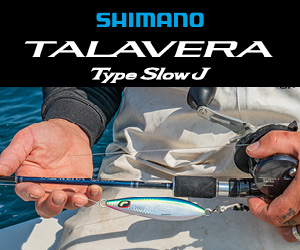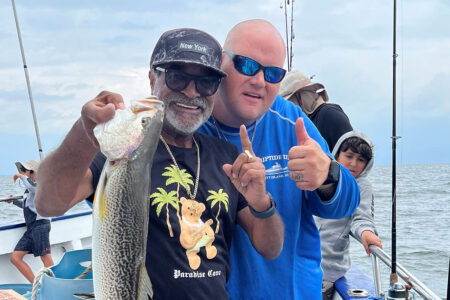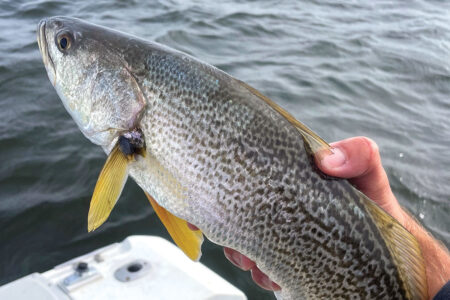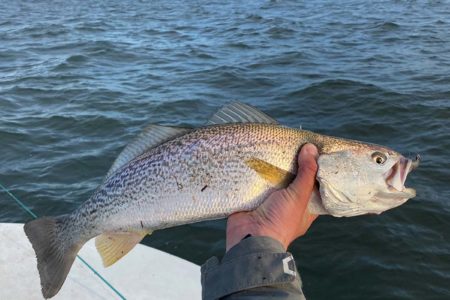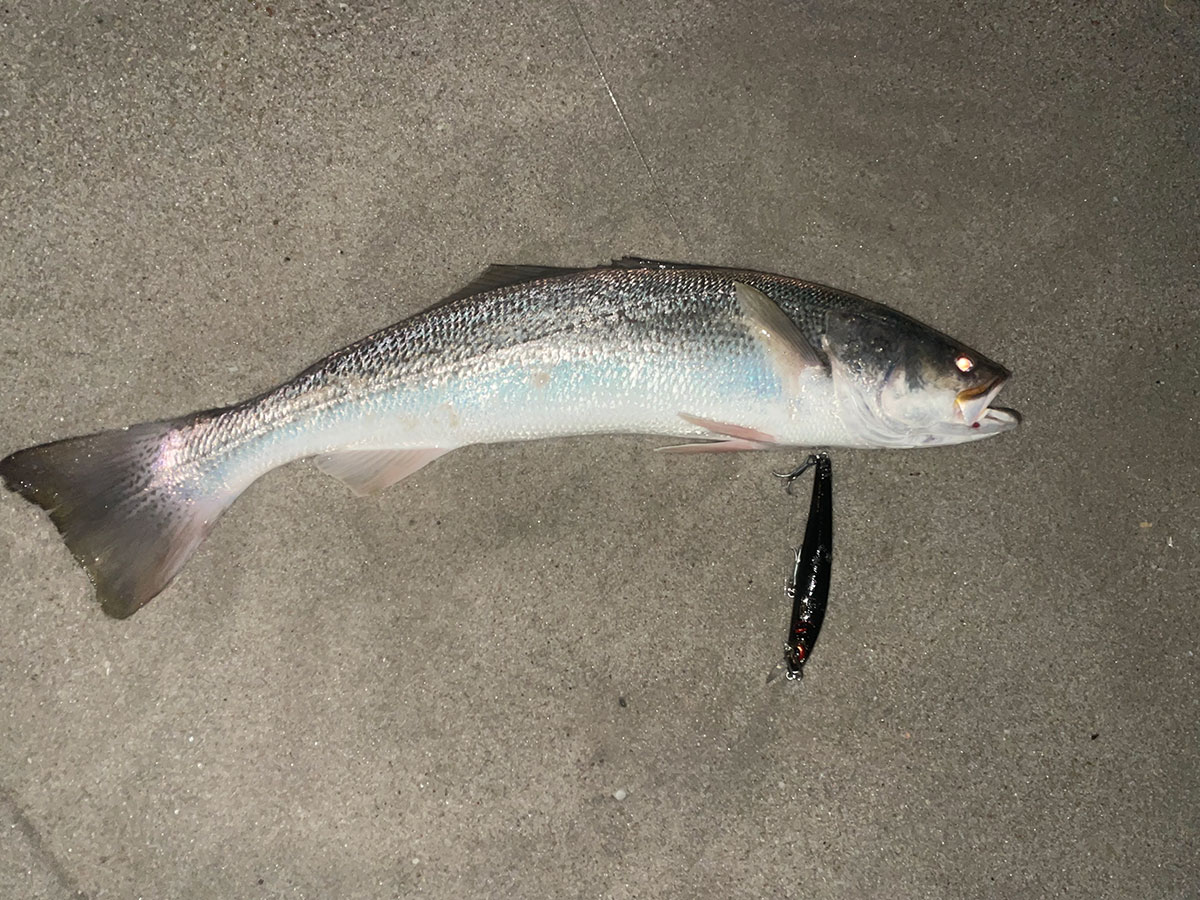
What’s actually more rare, the weakfish or the weakfish angler?
A long, long time ago, in a galaxy far, far away, weakfish of all classes were super abundant in New Jersey’s waters. Up to three decades ago, areas along the Delaware Bay laid claim as The Weakfish Capital of the World.
Tiderunner weakfish over 10 pounds were not an uncommon catch when you targeted them, dialing in the right time and tide; that is, up until about 2005. Then it all went bankrupt. Not only did we not see the true tiderunners around any longer, but weakfish in general were, well, ghosts. Occasional blips of summer spikes and 2- to 3-pounders pop up every now and then inside the back bays and out front, but the past three spring cycles have shown some interesting signs.
In recent times I’ve found some of those surf phantoms showing up, releasing over a dozen weakfish of 10 to 14 pounds from the sands the past three springs – some of the largest I’ve ever caught.
The question is, is there a new pattern of larger weakfish falling into place?
Surf Secrets
When I luck into a newly “rediscovered” fishery that evinces itself, I usually am reluctant to write or post about it for months, even years to prevent any over-targeting of the species. However, this is written as a point to note to bring awareness that spawning class weakfish may be showing up in better numbers.
For three springtime cycles now, the surf has been holding secrets along the sands. During April, May and June, my night time sessions are mainly dialing in quality sized stripers of 20 to even upwards of 35 and 40 pounds. My log books show that in May of 2021, I was casting black Bombers out during the dead of the night and getting what I thought were tail slaps from large bass missing the plugs. I even hooked a few but they quickly came unbuttoned after a few cranks.
Realizing I needed to switch up speeds and presentation, and loosen up my drag setting, I began to slow down the retrieve almost to a dead halt until I felt a tap again, then let the plug sit until the next tap commenced whereupon I gently set the hook and felt wriggling on the end of the line. Thinking it was a squid or some odd creature I reeled in gingerly and adjusted the drag to a fairly loose setting to prevent a pulled hook. Some drag began to rip off, back and forth for a good three runs and within a few minutes my headlamp shone into the undertow to get a glimmering glance of a whitish, silver-purple flank. My knees buckled and I played the fish in for the final count. A 35-inch weakfish was sitting in the wet sand by my feet. A quick release within 25 seconds and the fish was off tail-splashing away.
That night, I landed three weakfish total, all from 32 to 35 inches, true 10- to 14-pound caliber fish. The next 2 years the same pattern repeated with the same class of fish, which lasted only in a week and a half period each month of May and June in the surf. Will it happen again this year?
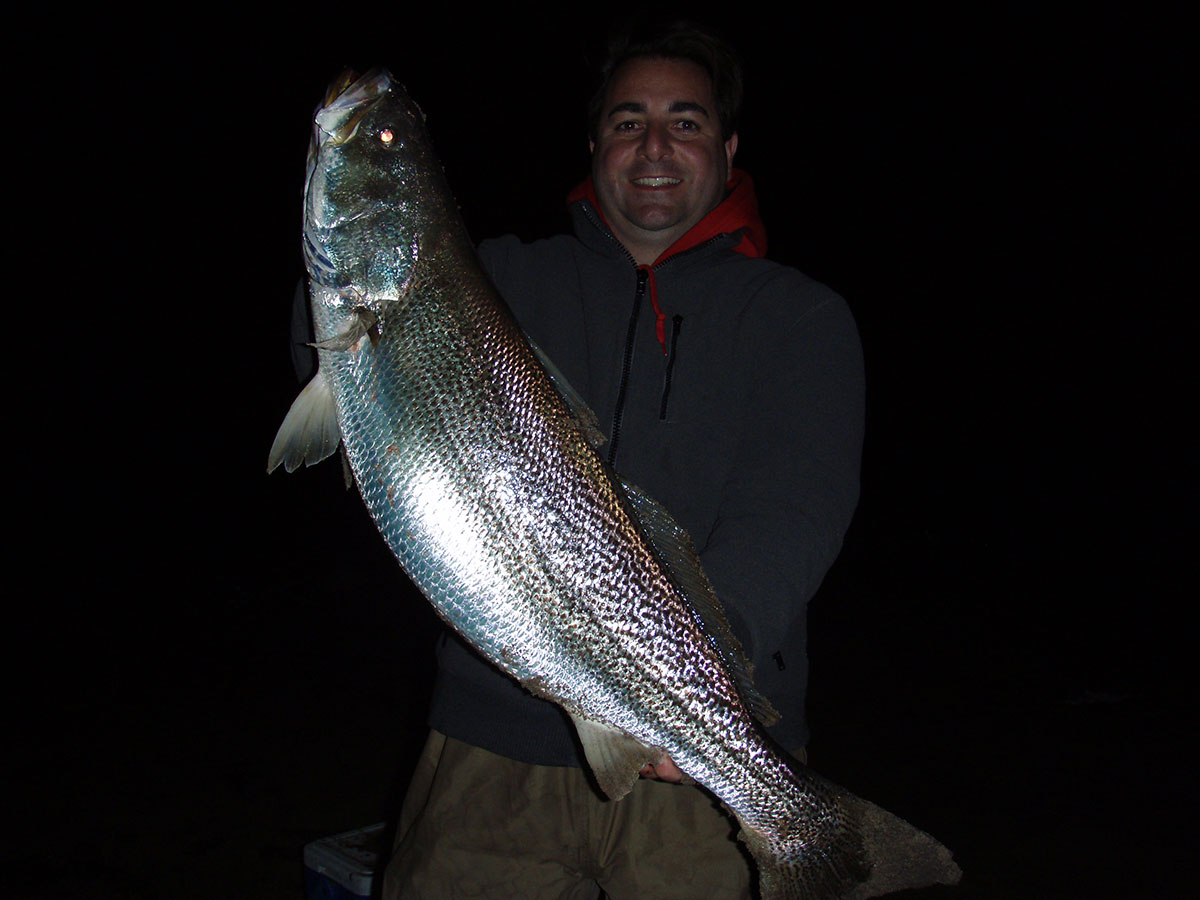
Historical Haunts
A few areas always seemed to hold 10-pound plus weakfish in the glory days. Of course, Delaware Bay was the hot spot for decades when the weaks were around in abundance. The world record weakfish of 19 pounds, 12 ounces was caught in 2008 off the Raritan Bayshore off Great Kills Harbor by Dave Alu, guided by Rich Swisstack. Of all things that monster hit a bunker head launched out for a cow bass.
Raritan Bay always had a crazy night bite on weakfish in Flynn’s Knoll, Swash Channel where drifting three-way swivel rigs with floated sandworms dialed in the big spiketooths. Personally, I always had luck inside of Barnegat Bay near the creek outflows during pre-dawn sessions at the start of the outgoing tide and Bubble Gum Fin-S or small half-ounce pink bucktails were the go-to lures.
Any of these spots could very well become magnets again for the fish and are a good jumping off point to start your search. Anywhere along the surf from Sandy Hook through Cape May is a good bet to find weaks during the spring nights. Cast out black swimming plugs such as Bombers, Yo-Zuri Mag Darters and Crystal Minnows.
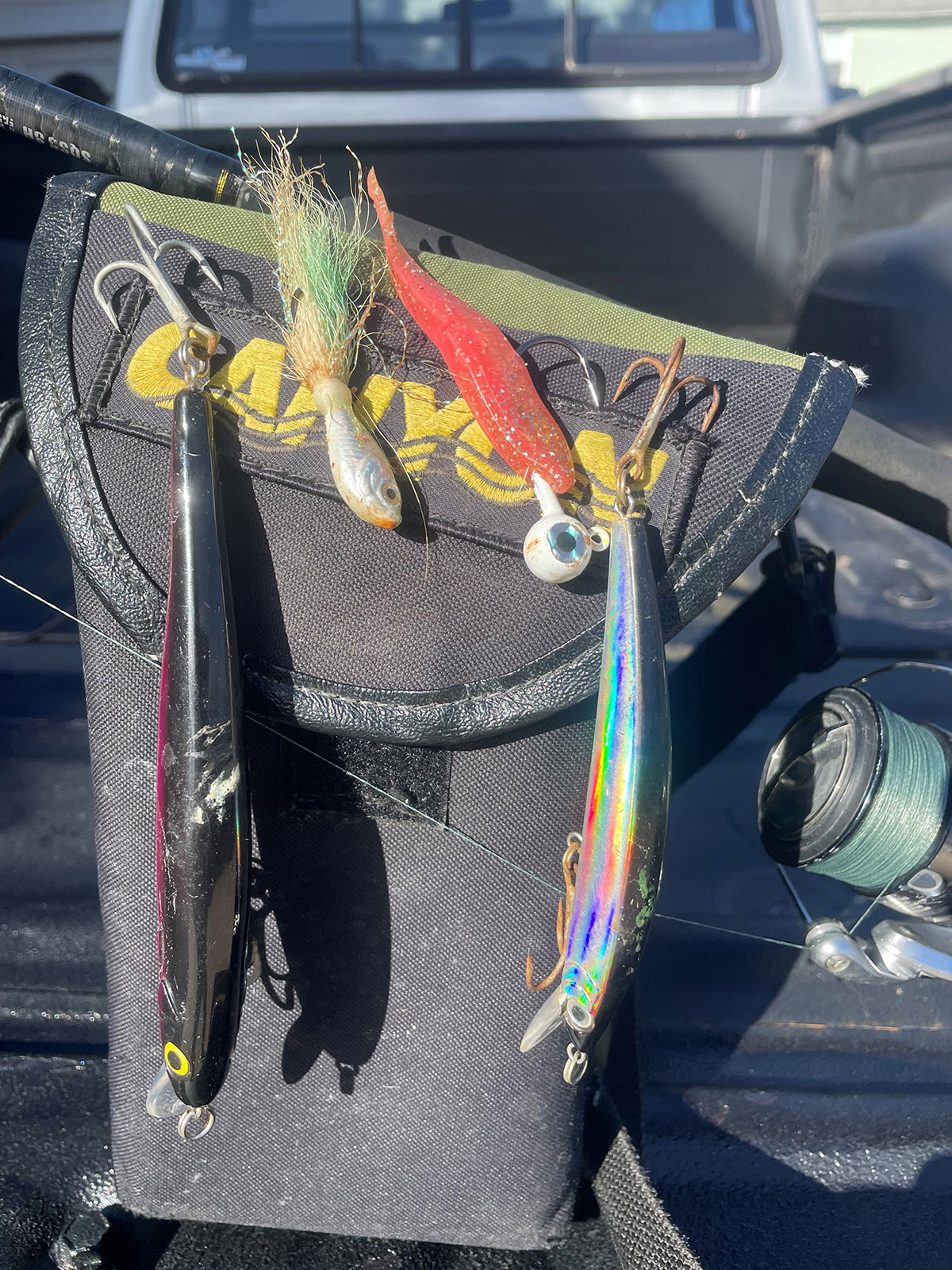
Not Yet A Comeback
Do I think tiderunner weakfish are going to be here in full force in the coming years? Probably not, but I hope so. Such a fickle species, it’s tough to put any stake in the recovery or resurgence of the species as we have bizarre year periods where it seems they are just beginning to show again only to disappear into the ether. But know this. Maybe there’s more big weaks around then we know about, and the fact is that people simply aren’t fishing for them, choosing to toss heavier tackle, plugs and gear for large stripers during the times they show.
My sessions catching tiderunners in the surf started out by pure luck while fishing for big bass, nothing more. But when I realized the oddity of the tap-hits, I switched up to finally plant a hook and identify the mystery of what was hitting. This season, if you head out, scale down your gear to 8- to 17-pound rated, 7-1/2-foot rods, with 4000 to 5000 reels spooled with 30-pound braided line and a topshot of 15- to 20-pound fluorocarbon leader. Adjust your drag to a half crank above loose and utilize lures with single hooks with the barbs pinched down.
Hooksets should be a quick pull of the lure, not a jarring hookset, and the battle should be give and take with the paper-mouthed weakfish. Most of my successes have been fishing the spring night time from dead low water into an incoming tide, as well mainly around the full and new moon cycles. Keep presentations slow and steady, and don’t swing for the fences if you get tapped, but put a mild hookset on the fish.
Play your cards right, put in the time, and I bet you’ll find success with a tiderunner in the surf this spring. And please remember, always consider releasing any weakfish you catch no matter what the size.
